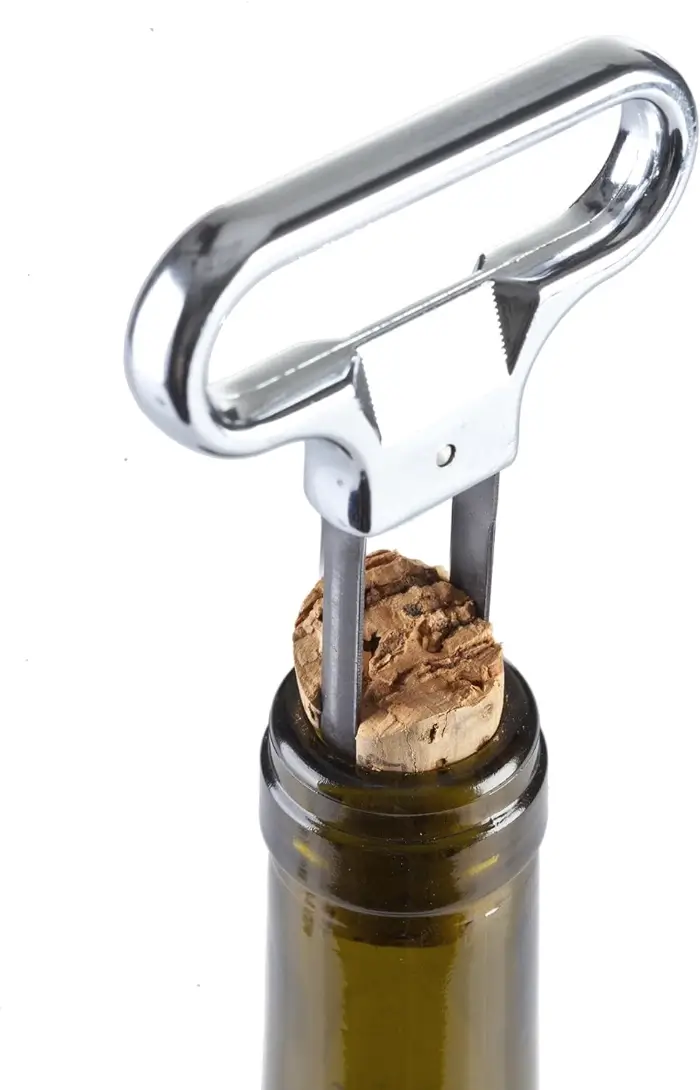Corkscrew : There's Still a Science Behind It !
Exploring Corkscrews : An Essential Tool for Wine Enthusiasts
The corkscrew, humble and often overlooked, is an essential tool in the life of any wine lover. This ingenious instrument allows you to elegantly (or not—I see all of you trying to make the loudest *pop* the earth has ever heard) extract the cork that seals the bottle, revealing the aromas and flavors of this precious beverage. In this article, we will explore the fascinating world of corkscrews, including waiter’s corkscrews and sommelier tools, examining their usefulness, history, the different types available on the market, and how to use them.
If you want to jump straight to my article comparing the best corkscrews, you can do so by clicking the following link : Best Corkscrew Comparison. I’ll see you there !
First, what is it actually used for ?
The corkscrew is designed for a simple yet crucial task : opening a bottle of wine by removing the cork lodged in the neck with a spiral, usually made of stainless steel, that is inserted into it. The cork is often made of this material because it is used to seal the bottle hermetically, preserving the quality of the wine by preventing air from entering.
Its History and Invention :

It has a history that dates back several centuries. Its invention is attributed to various sources, but its development is closely linked to the history of cork stoppers and the evolution of wine bottle closures.
Here are some key elements of the history of the corkscrew :
Cork Stoppers : Originally, bottles were sealed with cork, which was more difficult to remove than the metal or plastic caps used today. This led to the need to develop specific tools to open bottles sealed with this type of stopper.
Its Beginnings : Its earliest versions were simple, often consisting of a metal screw inserted into a wooden handle. Users would turn the screw into the cork and then pull on the handle to extract it from its prison.
Patents and Improvements : Over time, many variations were invented, featuring different designs and mechanisms. Some models were more complex, using levers, wheels, or other methods to facilitate the cork extraction process.
Notable Inventions : In 1795, the first patent for a corkscrew was filed by the British inventor Samuel Henshall. Over the decades, many other innovations followed, creating a variety of corkscrews, from the simplest to the most elaborate.
Thus, it has evolved over time to meet the changing needs of the wine industry and consumers. Today, there is a wide variety of corkscrews, ranging from traditional models to modern and sophisticated designs. The logic remains the same: a handle with a beautifully shaped corkscrew spiral, screwing directly into the cork of a fine bottle to extract it !
The Different Types of Corkscrews :
The Waiter’s Corkscrew :
The waiter’s corkscrew is the classic bottle opener, often found in the toolkits of many servers and wine enthusiasts. It features a spiral screw attached to a foldable handle, making it easy to store and transport. To use it, you need to turn the screw into the cork while keeping the handle in a vertical position. The only difference between waiter’s corkscrews and sommeliers is that the sommelier lacks a bottle opener. The waiter’s corkscrew is more versatile, as it can also remove the cap from a beer bottle or other containers. However, both have a blade or knife, known as a foil cutter, which is used to cut the capsule from the neck of the bottle.
The Lever Corkscrew :
This model uses a lever to remove the cork. By inserting the screw into the cork and lowering the lever, the cork is extracted effortlessly. I’m not particularly fond of this type of tool, as I have experienced poor results with it. Sometimes the cork cannot be removed properly, leading to the lever or handle breaking for various reasons. Even though it is ergonomic, if it breaks often, it’s better to use a good traditional waiter’s corkscrew !
The Two-Pronged Corkscrew :
The two-pronged corkscrew, or wing corkscrew, is a different kind of tool that uses two small blades to grip the cork. By placing the prongs along the cork and rocking from side to side, you can eventually extract the cork. This type of corkscrew is very useful for opening old wines, where the cork may be damaged.
You can remove the cork without too much fear of it getting stuck inside the bottle !
To make it simpler, here’s the direct link to the two-pronged corkscrew that I own : The Two-Pronged Corkscrew and How use it, no more breakage! Yes, this is indeed a type of corkscrew, and this gadget could very well save your meal by allowing you to open a lovely old bottle of wine !

The Electric Corkscrew :
Electric corkscrews have gained popularity for their ease of use. They typically operate with a rechargeable battery and can extract the wine cork with the simple press of a button. Opening a bottle has never been so easy and comfortable, all to fill our glass with wine !
In conclusion, the choice often depends on personal preferences and frequency of use. Whether you prefer the classic charm of a waiter’s corkscrew or the modernity of an electric one, each of these tools has its own appeal.
Regardless, they all serve the purpose of enhancing the tasting experience of our vintage, making the corkscrew an indispensable companion for any wine enthusiast.
And as things should be done well, I invite you to check out my article about these tools by following this link : Best Corkscrew Comparison !